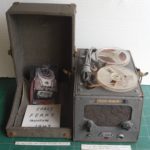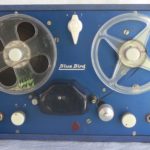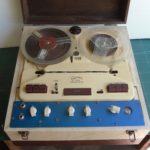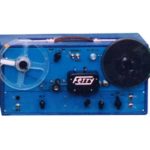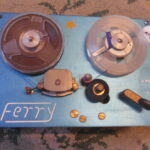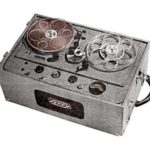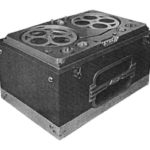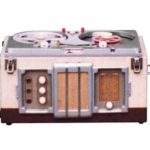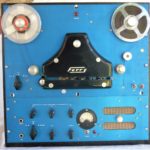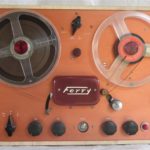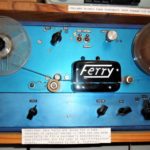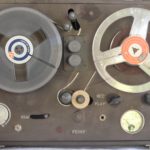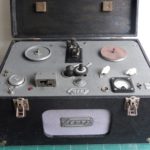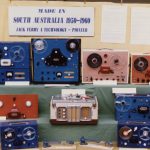In order to use this feature, you need register and become a member.
Already a member? Login Register hereFerry Reel to Reel Tape Recorders

1947 To 1961
Company Description Submit New Info
Ferry produced reel to reel tape recorders from 1950 to 1960 which were manufactured in Australia. These tape recorders targeted the consumer market. The early models of Ferry tape recorders used tube electronics and later on they transitioned to solid-state tape recorders. The company produced both 2 and 4 track machines available in 220-240v & Battery voltages.
1947– Jack Ferry begins by building 5 Tube Table radios in a small factory in Lower Mitcham Adelaide, working for Peerless Radio prior to starting his own factory at Clapham, Adelaide, where he manufactured turntables, pickups, amplifiers and disc recording equipment
1948 – Jack Ferry built a number of prototype wire recorders
1949 – Moves over to the new tape technology
1950 – First production model, a single speed full track one motor and no fast-forward.
Ferry starts making reels out of Bakelite
1951-1953 – Second production R-R Tape recorders made of cast aluminum now offering half track variable speed, two speeds with fast-forward and rewind with an optional radio tuner. A single motor drive using a figure 8 belt and two clutches for take-up and rewind. The motors were made by a Mr. Lenard Senn
1952-1954 – M5 Model Introduced
1954 – Business registered as Ferry Sound Industries, the company is known to do customization projects.
Starts making three motor recorders in 1954 and used gramophone motors made by BSR in England which were also used for all semiprofessional tape recorders from 1955. Company producing approximately 5 R-R tape recorders per week
1954 – Introduces equalization or tone control for the recording process
1955 – Changes from cast aluminum to sheet-metal to lighten up. Jack creates an 88 page manual, summarizing everything he knew about R-R tape recorders which was sent to the Australian tape recordist Association
1956 – Jack auditions what is the first stereo tape recorder built-in South Adelaide. This Stereo machine is nicknamed Frankenstein the monster and it had three motors, three speeds half track staggered with a 7 watt tube stereo amplifier.
Company switches to anodized aluminum faceplates and the introduction of colour.
Jack was elected president of the Australian tape recordist Association a position he held until late 1959.
1957 – Produces a portable 12 VAC recorder which became a prototype for the bluebird which would be used for music applications as well as dictation and matched bluebird Australian typewriters in appearance
1958 – Develops a prototype of a smaller portable with 6 V DC motor and a transistor amplifier which never took off as the Japanese tape recorders began to arrive in Australia
1959 – Much like many UK producers, the cost efficiency of using Collaro tape transports was adopted by Ferry
1961 – The distraction of television causes a slump in the demand for tape recorders and with the Japanese invasion, it would appear that the company was wound down at that time
1966 – The passing of this bright and energetic sound engineer, Jack Ferry, who died in December, marks the end of homegrown South Adelaide sound engineering
It is estimated that Ferry sold 1500 tape recorders in total
1956- The first experimental stereo recorder was made.
Ferry Reel to Reel Tape Recorder ModelsSubmit New Model
General Information Submit General Info
Manufacturer: Ferry
Years in Business: 1947 To 1961
Country: Australia
Years making R-R Tape Recorders: 1950 To 1961
An interesting Ferry Resource!

